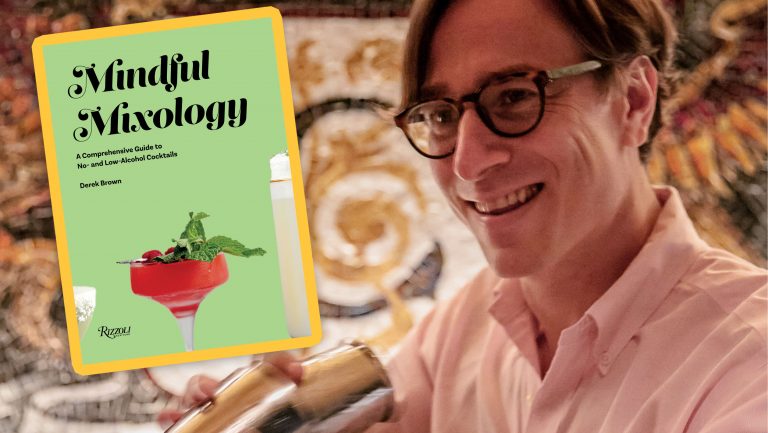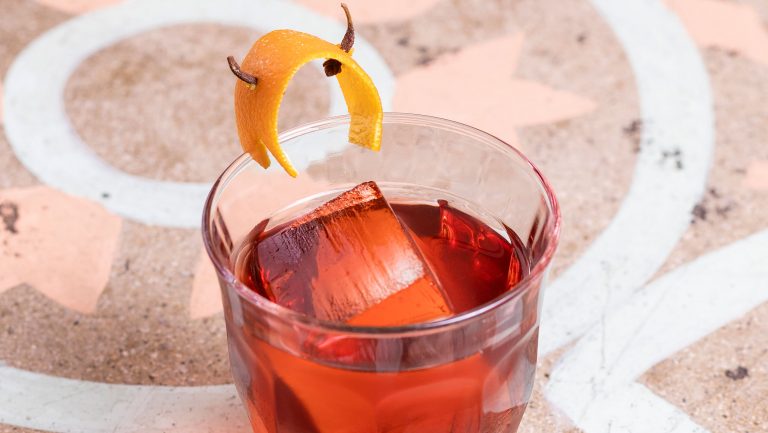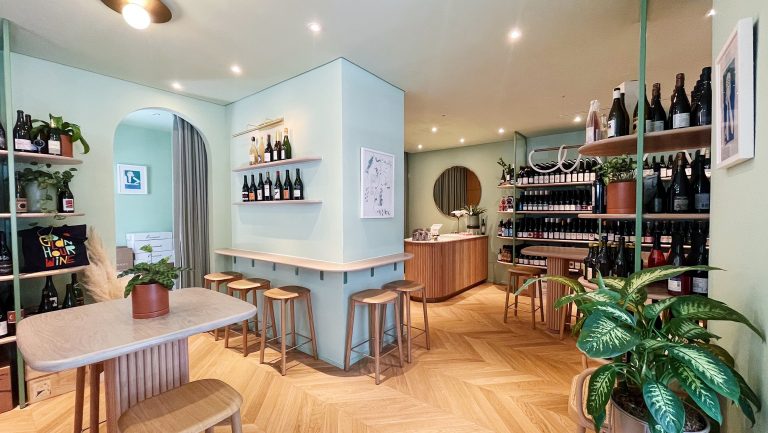In recent years, non-alcoholic wine, spirits, and beer options have garnered more space on beverage lists across the U.S. Not only is there an explosion of new non-alcoholic brands on the market, but the number of consumers dabbling in non-alcoholic beverages also continues to grow.
The market value of no- and low-alcohol products surpassed $11 billion in 2022, up from $8 billion in 2018, according to IWSR. Consumption is predicted to increase by a third by 2026 spearheaded by the growth of no-alcohol products. Consumers are now cutting back or abstaining from alcohol far past Dry January.
What this data shows is that a strong non-alcoholic program represents a significant sales opportunity for an establishment. There’s a lot to consider to make the most out of this growing market, and while there are some similarities with designing a traditional beverage program, a successful non-alcoholic drinks menu requires a considered approach. SevenFifty Daily spoke to drinks professionals to find out how they create profitable non-alcoholic drinks programs that still offer value to the customer.

Don’t miss the latest drinks industry news and insights. Sign up for our award-winning newsletters and get insider intel, resources, and trends delivered to your inbox every week.
Do Your Research or Consult an Expert
With dozens of new options on the market, it’s important to stay acquainted with what’s available. “We tried 30 to 40 non-alcoholic beverages to learn how they’re made, to get a grasp of where they’re at and where they’re going,” says beverage director Gregory Thompson about the process of creating non-alcoholic cocktails for rustic Italian eatery Coltivare in Houston, Texas.
There are options for those who don’t want to go it alone, too. “There are a lot of people out there, myself included, helping to evolve this culture,” says Derek Brown, the founder of Positive Damage, a consulting service for mindful drinking, wellness, and no- and low-alcohol drinks. “Finding consultants to help with your program: there’s no shame in that.”
Brown assists bar and restaurant clients with menu creation and evaluation, bar and sales staff training, cocktail creation, and more. Many other consultants now offer similar services in response to this growing trend, such as Riff Raff Drink Co. in Alexandria, Virginia. Founder Jon Schott places an emphasis on staff training and education to reinforce new menu suggestions. Clients often request Dry January offerings and bespoke non-alcoholic cocktail meal pairings. “Both things are fun and I’m here for it all.”
For Carlos Ruiz, a mixologist and hospitality industry consultant based in New Jersey, most clients come to him for a revamp of their entire cocktail menu, including their zero-proof offerings. “I feel like non-alcoholic and low-alcohol cocktails have become [so] relevant that I don’t even need to mention them in some meetings,” he says. “It is typically already requested.” Consultants often also assist with sourcing products—since there are so many new non-alcoholic brands, a traditional distributor likely doesn’t carry them all.
Christopher Raba, the beverage director and partner of Bolita, a Cuban-inspired cocktail bar in Los Angeles, worked with one of the growing number of non-alcoholic bottle shops instead. Though Raba has experimented with making non-alcoholic cocktails throughout his career, he hosted a pop-up event in collaboration with Jillian Barkley, the founder of Soft Spirits. The experience introduced him to new brands, a new community of patrons, and led to a new drink on the menu, the Harvest Moon—made with Three Spirits Social Elixir, tart cherry, a savory salt rim, and liquid smoke, which, Raba says, is reminiscent of a mezcal margarita.

Create Consistency on the Menu
So what kind of non-alcoholic cocktail will sell? “It depends on the bar or restaurant itself,” says Brown, who’s also the author of Mindful Mixology: a Comprehensive Guide to No- and Low-Alcohol Cocktails. If a customer went to a wine-centric restaurant and they didn’t have non-alcoholic wine options, for example, that might be disappointing.
“When I approach a program, I ask, ‘What are the customers used to here?’ More than anything, people want to experience the best that place has to offer,” says Brown.
At Coltivare in Houston, Thompson chose to create non-alcoholic versions of the restaurant’s most popular cocktails—their Coltivare Classic Gin and Tonic with grapefruit peel and mint is on their zero-proof menu as the Not and Tonic with Cut Above Zero Proof gin, grapefruit, mint, lime, and tonic. Utilizing the same ingredients in your zero-proof offerings as in your traditional cocktails is also a way to maintain consistency on the menu—and keep costs down.
Think About Quantity and Positioning
“If you’re going to do a non-alcoholic menu—and you should—generally what people start with is two cocktails at the end of their menu,” says Brown. “I would encourage them to do four. We have so many different types of drinkers. Some people want sour and sweet [profile], some want rich and ‘boozy,’ and you have people who want everything in between.”
If this feels like a lot, remember, he says, that “four makes people feel like they have options and choices. A sense of autonomy is critical to people enjoying a bar or restaurant.” Brown also recommends having at least one non-alcoholic beer and one non-alcoholic wine.
Which goes to show, non-alcoholic cocktails warrant their own section on the menu. As Brown puts it, the only wrong way is to have non-alcoholic cocktails live “on a separate menu or a section where children order drinks,” meaning sodas, juices, coffee, and tea.
Some restaurants, he says, use the approach of an initial or symbol, as many do with vegan or vegetarian dishes. Others use ABV. “Be consistent with the way you’re representing other cocktails—it’s important they are represented on the menu in a way that’s inclusive, not buried.”

Cost Them According to Their Value
“There’s a little challenge with guests sometimes because they’ve been trained to expect a non-alcoholic drink to be less expensive,” says Tyson Buhler, the food and beverage director at Gin & Luck, the parent company of the Death & Co. cocktail bars in New York City, Los Angeles, and Denver. “The reality is that these non-alcoholic spirits are just as, if not more expensive, than full proof spirits. At the end of the day, we still have to cost the drinks appropriately to fit within the business.”
So it’s vital that the drinks are worth it. “The key is to hold your non-alcoholic program to the same standards that you hold your alcoholic program to,” says Raba. “If they taste as good, I don’t see anything wrong with pricing them accordingly.”
Do this, and it can be quite lucrative. During this past Dry January, Coltivare garnered $10,000 in four weeks of non-alcoholic cocktail sales, as compared to around $2,000 in non-alcoholic sales per month in 2022. This was the second year that the restaurant created a separate Dry January menu, with seven zero-proof cocktails, two non-alcoholic beer options, and one non-alcoholic sparkling wine. Thompson consulted with local non-alcoholic bottle shop Sipple, trained the staff two weeks out, and placed the non-alcoholic menu as a paper insert in the cocktail menu so it was the first thing diners saw when they sat down. “If you give patrons an option that tastes really good, they’re going to come back. They’re going to tell their friends.”
Staff Education is Crucial
Menu placement and description only goes so far. Staff education on traditional and non-alcoholic cocktails should be equally thorough. “We treat education the same as [with] a full-proof cocktail, tasting and learning about each ingredient in the drink,” says Buhler. “Typically, people that are looking for a non-alcoholic drink will search it out on their own, and then it’s our job to convey what the flavors, aromas, and presentation will be like.”
When it comes to ordering, train staff not to ask prying questions, Brown suggests, speculating on a guest’s reason for not drinking. “Even if it can seem like a nice thing, people may not want to share, and other people in the party may not know.”
Education extends to learning from your guests, too, whether that’s soliciting direct feedback or closely watching sales. “Make sure you have a feedback loop,” says Brown. “People put two cocktails on the end of the menu and forget about them. The guests are going to talk to the staff; hopefully the staff is listening.”

Dispatch
Sign up for our award-winning newsletter
Don’t miss the latest drinks industry news and insights—delivered to your inbox every week.
Sophia is a New Jersey native now based in Los Angeles. You can find more of her writing at sophiafgottfried.com and follow her on Instagram @sophiafgottfried.








